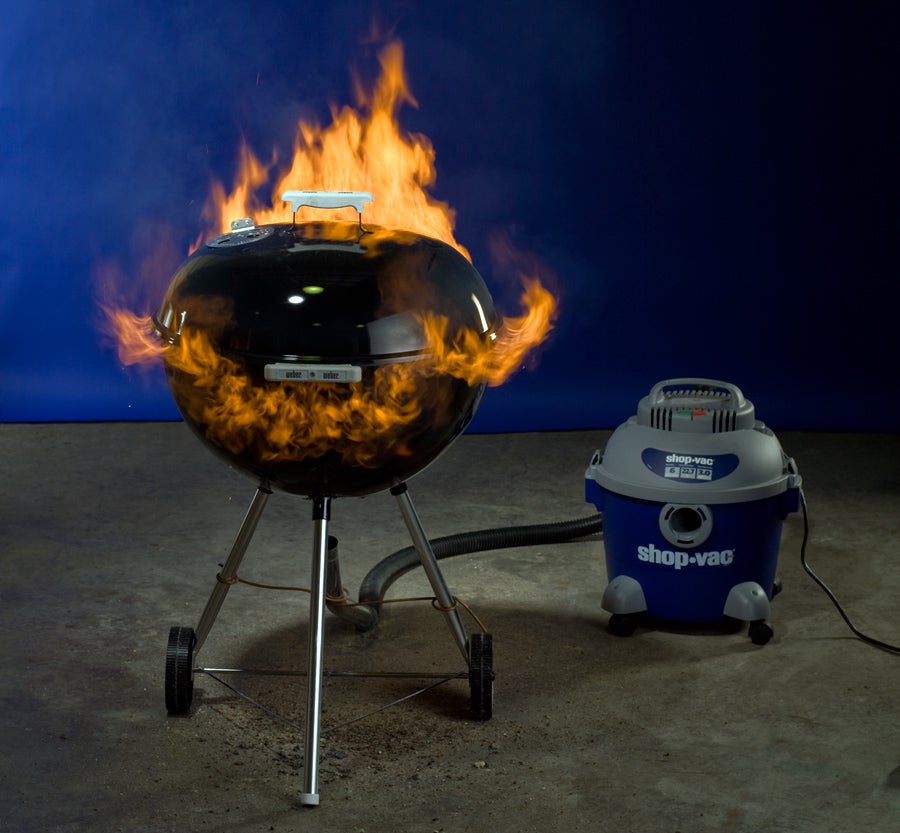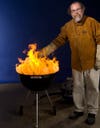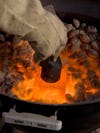Gray Matter: Making glass in a grill
The author creates an ornament—using his barbecue.

All the components of glass can be found in two places: the beach and the laundry room. It’s possible to melt pure white-silica beach sand into glass, but only at temperatures of 3,000 to 3,500 degrees Fahrenheit. Washing soda, lime or borax (a traditional laundry aid) added to the sand disrupts the quartz-crystal structure of silica and reduces the required temperature to a more practical, though still dangerous, 2,000 degrees, which I achieved with a backyard grill and a vacuum cleaner. Glass is thought to have been discovered around 7,000 years ago by Phoenician merchants when cooking fires were built over sand that, by chance, had some of these substances mixed in.
A charcoal fire fed with air from the bottom is hot enough to melt the combination of those materials into glass but not hot enough to make it truly liquid, so bubbles tend to remain and make the glass cloudy. I mixed the finely ground ingredients together and heated them in a cast-iron pot, then poured the molten glass into a graphite mold and pressed it down with a graphite stamp.
Achtung! Theodore Gray is a scientist trained in lab safety procedures. It is very dangerous to push a charcoal grill beyond its intended temperature limits. Do not try this method of glassmaking at home. Wear a dust mask when handling silica sand. For more information on Gray’s scientific pursuits, visit his website.

Soda-lime glass has the lowest melting point but must be cooled slowly to avoid shattering from thermal stress. Borosilicate glass, commonly known as Pyrex, melts at a higher temperature but can be cooled more rapidly. I made a medallion out of each and just left them in the fire as it died down over a few hours.
Although making glass from sand is satisfyingly primal, starting with actual glass is more practical. Old test tubes yield high-grade borosilicate glass; wine bottles, colored glass. Watch out—it’s all very sharp and hot when molten!
Photo gallery





This story has been updated. It was originally featured in the December 2008 issue of Popular Science magazine.